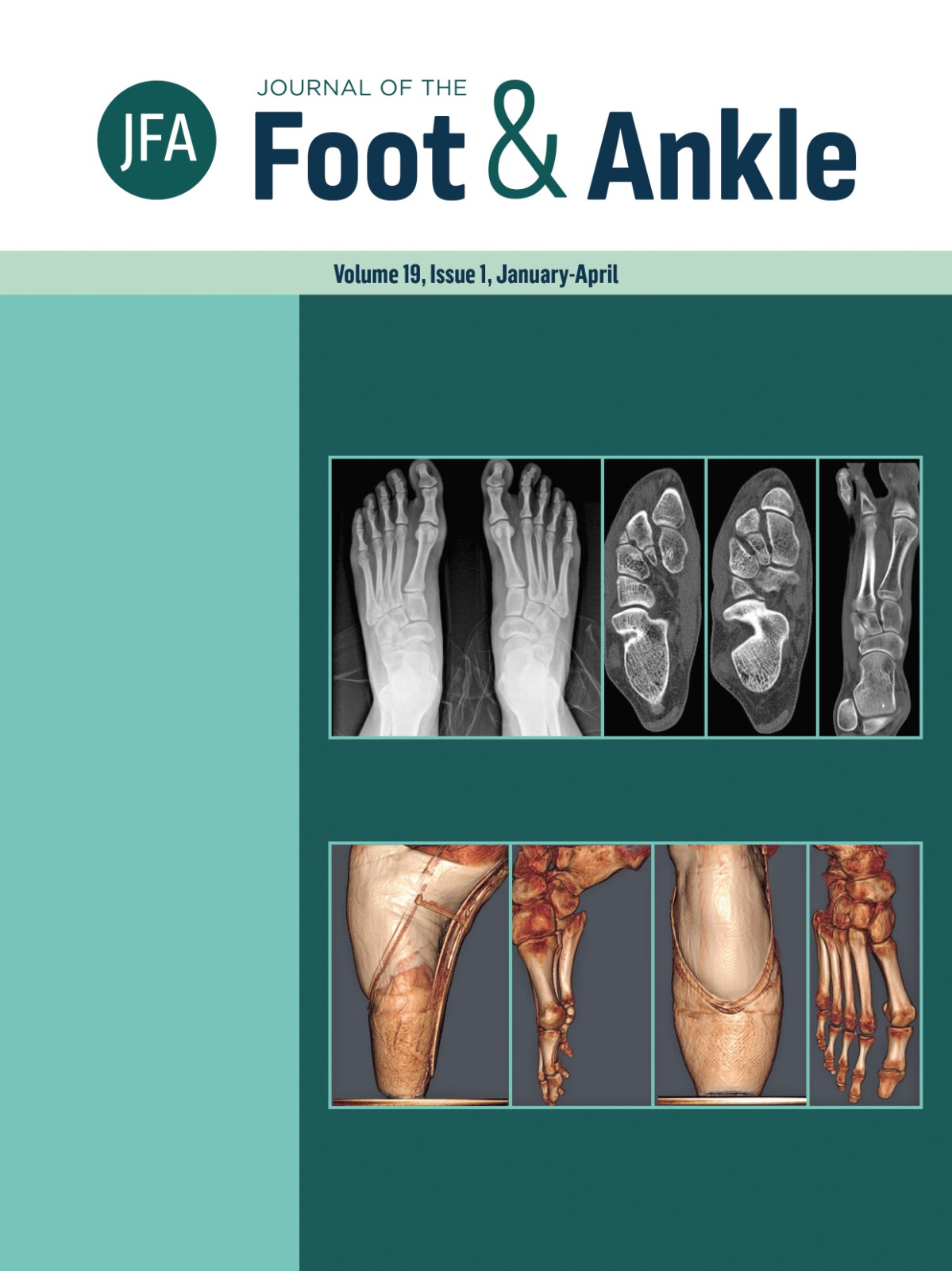Surgical treatment of hallux rigidus with percutaneous Watermann-Moberg technique
DOI:
https://doi.org/10.30795/jfootankle.2025.v19.1842Keywords:
Hallux rigidus; Minimally invasive surgery; SurveysAbstract
Objective: Evaluate patients with hallux rigidus grades 1 and 2 by Coughlin and Shurnas classification, operated in two medical centers using an association of Watermann-Moberg osteotomies and cheilectomy by minimally invasive technique. In addition, evaluate clinical and functional parameters in the pre-and postoperative, using The American Orthopaedic Foot & Ankle Society (AOFAS) questionnaire and visual analog scale (VAS). Methods: Twenty-five patients, 28 feet, hallux rigidus with grades 1 and 2, were operated on from July 2014 to December 2023. The AOFAS and VAS questionnaires were applied in the pre-and postoperative, with a minimum follow-up of six months. Results: The preoperative AOFAS score was 41.18 (± 12.45) and 80.71 (± 12.01) in the postoperative, with a mean variation of 39.53 (± 14.68) (p < 0.001). Preoperative VAS was 7.61 (± 2.29) and 2.68 (± 2.86) in the postoperative, with a mean variation of 4.92 (± 3.75) (p < 0.001). Conclusion: The combination of Watermann-Moberg percutaneous osteotomies showed a significant increase in the mean AOFAS score postoperatively compared to preoperatively. The mean VAS score postoperatively also showed a significant improvement in the level of pain presented by the patients included in the study. When properly indicated, the Watermann-Moberg percutaneous surgical technique is a safe and reliable option for treating hallux rigidus grades 1 and 2. Level of evidence IV; Therapeutics studies, Case series.
Downloads
Published
How to Cite
Issue
Section
License
Copyright (c) 2025 Journal of the Foot & Ankle

This work is licensed under a Creative Commons Attribution-NonCommercial 4.0 International License.







